Worship of the Dead
You can read more about those buildings, tombs, graves and temples associated with the dead in this article. The city of the dead was mainly in the west side of archaological field of Kerameikos. Some of the tombs are: Demetria's, Pamphile's Kefissodoro's, Philokrates, Philokrateia, Lysimachides, Sossibios, Potamioi, Eukoline's , Ariston's, Samakios, Sinopeis', Dexikley', roman graves, hellenistic graves, unknown graves, etc.To the east, passing the hiera odos, there are tombs of Kleomide's, Theonicho's, Myrte's etc. As we move to the east we find ruins from old pottery workshops, outside the road of dipylon.
Dipylo
As I mentioned in the article about the burial customs in Kerameikos, this place was a crossroads with a great spiritual meaning. Dipylo was the gate who united three roads, two different worlds. Dipylo means two gates, the gates of the fortification wall. One of them lead to Eleusis and the pomp from Athens to Eleusis passed this gate and the other gate lead to demosion sema, the place where great Atheneans were buried in full honour and the forest of Akademos. When a traveller passed dipylon he had to go to ancient agora. If someone wanted to go to Corinth, Thebes, Eleusis etc. it should pass through the gates of Kerameikos. Dipylon was the greatest gate of the ancient world. It covered 1800 m2 Around the gates in the square burial ceremonies were taking place and also sport games. It was a spot for meetings of common people, merchants, travellers etc. Dipylon also acted as a strong fortress against enemies who wanted to enter the city of Athens. The height and the length of the walls allowed the Atheneans to gather and fight in a wide range from a advantage position. Dipylon also protected the city from the attack of Philippos. Close to dipylon between the gate and sacred way the slaughter of 100 bulls took place as a sacrifice to Athena in the Panathenea celebration.
Outside Dipylon in the road to the forest of Akademos or Akademeia, every year rites and celebrations were organized, like pomps with lampades (torches), horse runs etc. Also, spondes (offerings) were left for the deads from the Atheneans to the Demosion Sema and other burial tombs of the Atheneans and their allies who died in war to defend threir cities during the Peloponnesian War.
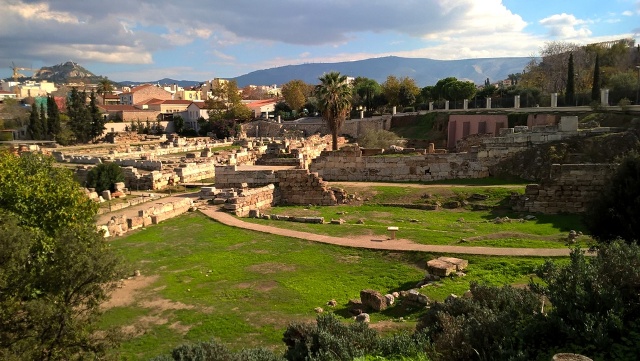
Pompeio
Between the sacred way to Eleusis and the gate of dipylon there was a place, in which at 4rth century b.C. the building Pompeio was built. It had kiones-pillars all around. Inside the sacred ship of the Panathenea pomp could fit, the veil for the statue of Athena, citizens and the sharing of meat took place in Pompeio. Pompeio was also used to store wheat and as a gym. Moreover, Diogenes gave his lectures in Pompeio, a statue of Socrates and a painting of Isocrates were there too. It seems that the square outside was an important gathering point for young men of Athens. The pomp from Acropolis to Eleusis began from the Eleusinion close to Acropolis, to Pompeio to Heridanos river and the Sacred Gate.
It was destroyed by the hater of Hellenes Roman general Syllas at 86 b.C. and for 200 years only ruins remained. In the same place storages were build but they were destroyed by Erouloi 267 a.C. There is a reason for Hellenes who divided the world to barbarians. After the 5th century a.C. two stoes were built vis a vis.
If you come to Athens and you visit Kerameikos, you have to go to the Pompeion. Walk inside the ancient temple and you will feel something unique.
Z-Building
This is a series of buildings who had been ruined and re-built numerous times. The first building was built before the Peloponesse War (600 cm2) Another building called Z2 was built in the after the demolishing of the first one and in 3rd century b.C. two more buildings were stood (Z3). Those buildings (Z1, Z2) were made in the base of the first one and the owners were rich habitats of Athens who lived in the Z building. The last use of the Z3 building imply that it was a fabric factory. The Z4, Z5 were built and destroyed totally in the 1rst century b.C. This colossal place had a yard, well, water pool, cooking room, room for women and many rooms etc. The first one was a very big house with a mosaic floor with painted geometrical shapes. The roof of the building had been shaped to collect the rain water to a water pool!
Valaneio
The circular heated pool of 5th - 4th century b.C. It was constructed in the appropriate angles so that the water will not leave. Graves were not under or around. Many other tanks collected the water. In the north, another building which has not been excavated, was used as a storage room for the visitors of the pool. Heated pool in 5th century b.C. outside the walls of Athens!
Tomb of Lacedaimonians
This great graveyard had the bodies of thirteen polemarchs Lacedaimonians that were killed during the end of the Peloponnesian War in 403 b.C. in Piraeus.
Sarcophagus across the tomb. Very dissapointing to see rusted iron.
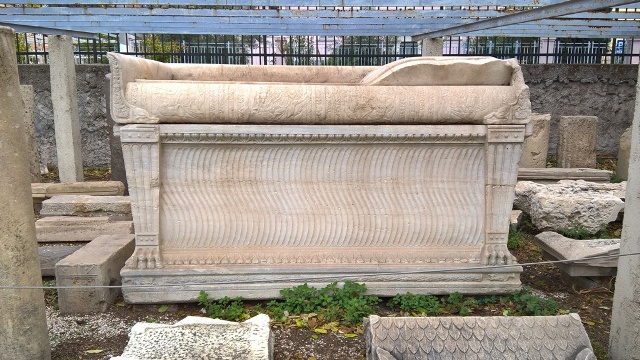
Workshops
In the eastern side before Dipylon pottery workshops have been found.



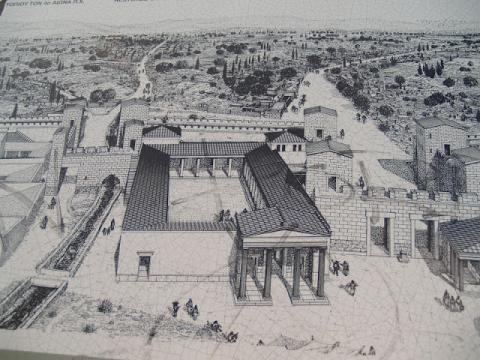

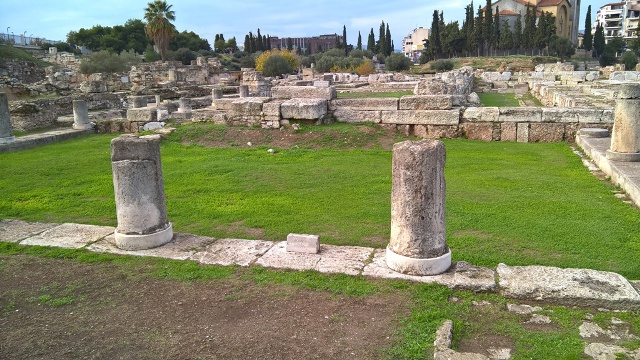
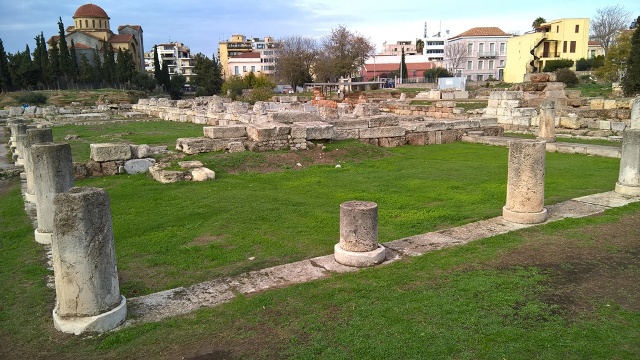
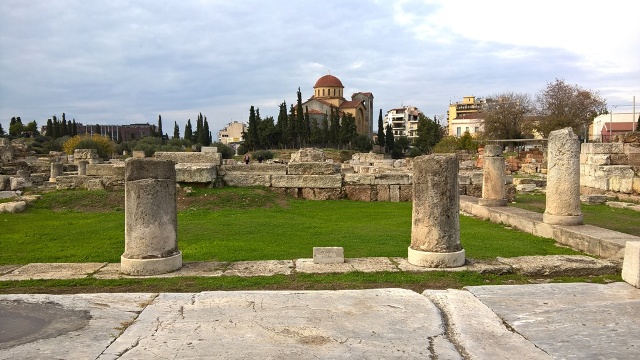
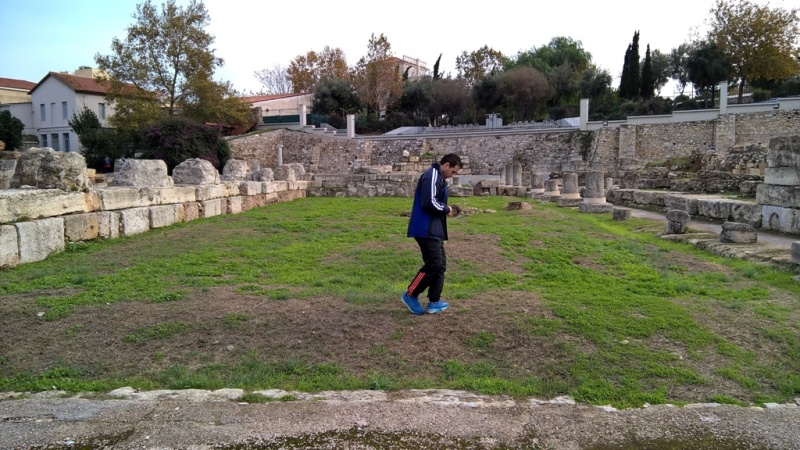










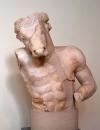

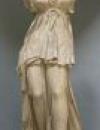








It amazes me how so many traditions follow these ancient protocols and roles,